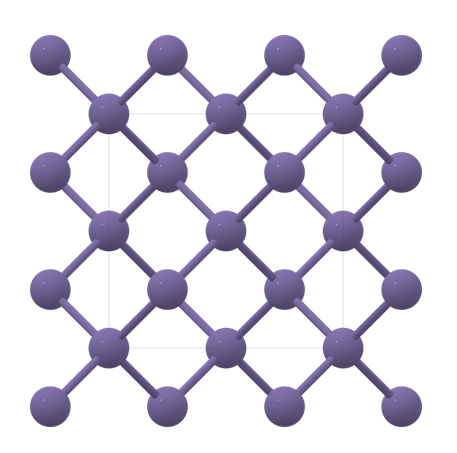Crystal Structure and Forming Process of Lanthanum Silicide
Rare earth metal (REM) silicides are a novel class of materials. Unfortunately, oxidation of the REM is a severe problem in forming REM silicides and for this reason, comparatively little work has been done. This article will introduce the crystal structure and forming process of lanthanum silicide (LaSi2)[1].

Figure 1. Crystal structure of lanthanum silicide.
Before the REM silicide can be used in practical devices, it is necessary to identify the phases that are formed and possibly the respective mechanisms of phase formation. In previous study, researchers found that with the isothermal annealing, RE metals reacted and intermixed with Si at temperatures as low as 200°C for 60 min, but the disilicide phase confirmed by the X-ray diffraction did not emerge until the annealing temperature was raised to 600°C for 60 min. Thus they suggested that there is an intermediate stage of silicide growth between 200-600°C before the complete formation of lanthanum disilicide.
The RE metal lanthanum in the La-Si multilayer films reacts with silicon at temperatures as low as 150°C to form an intermixed layer. Upon increasing the annealing temperature from 150-400°C for 1 h, lanthanum silicide gradually forms, and the completion of reaction occurs at 300-400°C. The final reaction product is lanthanum silicide with a tetragonal structure (a =4.272 Kx, c = 13.72 Kx). The determination of the compound stoichiometry by backscattering yields a formulation close to LaSi2.2 rather than LaSi2_n, obtained by thermal annealed single lanthanum thin film deposited on Si reported before. During the formation of lanthanum silicide from 150-400°C, there is some evidence for small grains in the selected area diffraction patterns, indicating LaSi2 crystallites were present in some regions. However, there is no conclusive evidence for the formation of epitaxial silicide layers when reacted in the solid phase even after RTA (900°C) for 10 s.
Reference
[1] Lanthanum silicide formation in thin La-Si multilayer films. Vacuum/volume 41/numbers 4-6/pages 1425 to 1427/1990.


